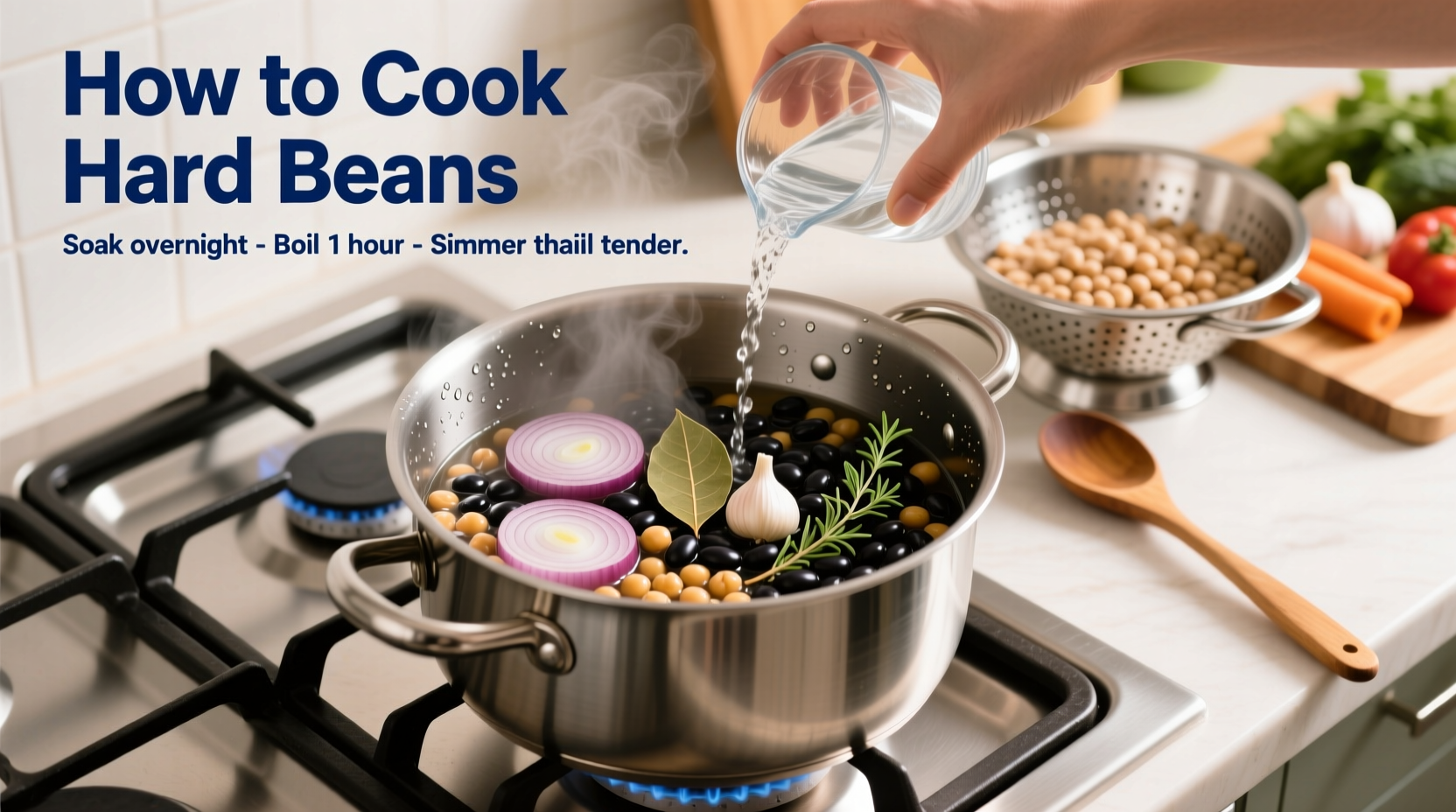Ever spent hours cooking beans only to find them still stubbornly hard? You're not alone. Many home cooks struggle with beans that refuse to soften, wasting time and ingredients. The problem isn't your stove or patience—it's usually improper technique or misunderstanding bean chemistry. This guide reveals the science-backed method professional chefs use to guarantee perfectly tender beans every time.
Why Beans Stay Hard: The Science Explained
Beans contain calcium and magnesium that strengthen cell walls, preventing softening. Older beans develop a waxy coating that resists water absorption. According to UC Davis Food Science Department, beans stored more than 12 months can require up to 50% longer cooking time due to moisture loss.
Bean Softening Timeline
- 0-2 hours: Water absorption begins, rehydrating dried beans
- 2-4 hours: Pectin breakdown starts in cell walls
- 4-6 hours: Starches gelatinize, creating creamy texture
- 6+ hours: Overcooking causes disintegration (avoid!)
Step-by-Step Cooking Method That Works
Preparation Phase: Setting Up for Success
Start with these critical preparation steps that most home cooks skip:
- Sort carefully: Spread beans on a light surface to spot discolored or damaged ones
- Rinse thoroughly: Use cold water in a fine-mesh strainer, rubbing gently
- Soak strategically: Choose either traditional (8-12 hours) or quick soak method (boil 2 minutes, rest 1 hour)

The Critical Cooking Process
Follow these precise steps for foolproof results:
- Use fresh, cold water (2 inches above beans) in a heavy pot
- Bring to gentle simmer (180-205°F / 82-96°C)—never a rolling boil
- Cover partially and maintain consistent temperature
- After 30 minutes, add salt (1½ tsp per pound of beans)
- Continue cooking 45-60 minutes until tender
| Bean Type | Soak Time | Cook Time | Special Notes |
|---|---|---|---|
| Black Beans | 8-10 hours | 60-75 min | Add epazote for digestibility |
| Kidney Beans | 10-12 hours | 75-90 min | Must boil 10 min first for safety |
| Chickpeas | 12+ hours | 90-120 min | Add baking soda (⅛ tsp) to soak water |
| Lentils | None | 20-30 min | Don't require soaking |
Troubleshooting Common Problems
When Beans Remain Hard Despite Hours of Cooking
If your beans won't soften, consider these solutions:
- Water hardness: Minerals in hard water prevent softening. Use filtered water.
- Acidic ingredients: Tomatoes, vinegar, or wine added too early halt softening. Wait until beans are tender.
- Old beans: Beans older than 1 year may never fully soften. Buy from high-turnover stores.
The USDA Food Safety and Inspection Service warns that undercooked kidney beans contain phytohaemagglutinin, a toxin that causes severe gastrointestinal distress. Always boil kidney beans for at least 10 minutes before simmering to neutralize this compound.
Advanced Techniques for Problem Beans
For particularly stubborn beans:
- Add ¼ teaspoon baking soda to soaking water (not cooking water) for older beans
- Try the pressure cooker method: 25-35 minutes at high pressure
- Use the "hot soak" method: Boil 2 minutes, remove from heat, cover for 1 hour
When Not to Force Softening
Some situations where you should discard beans rather than continue cooking:
- Beans that have been stored over 2 years
- Beans with insect damage or mold
- Beans that remain hard after 3 hours of proper cooking
As noted by the USDA National Agricultural Library, attempting to cook compromised beans wastes energy and risks foodborne illness. When in doubt, throw them out.
Storage and Usage Tips
Cooked beans keep refrigerated for 5 days or frozen for 6 months. Always store in their cooking liquid to maintain texture. For best results, freeze in portion-sized containers with 1 cup of liquid per cup of beans.
Frequently Asked Questions
Can I cook beans without soaking them?
Yes, but cooking time increases by 30-50%. Unsoaked beans require careful monitoring to prevent burning. Smaller beans like lentils don't require soaking, but larger varieties like chickpeas benefit significantly from soaking to reduce cooking time and improve digestibility.
Why shouldn't I add salt at the beginning of cooking?
Contrary to popular belief, adding salt at the beginning actually improves texture and reduces cooking time. Research from Harvard's Science of Cooking program shows salt helps weaken bean skins, allowing more even water absorption. Use 1½ teaspoons of salt per pound of dried beans added after the initial 30 minutes of cooking.
How can I prevent gas from eating beans?
Discard soaking water and use fresh water for cooking, as this removes oligosaccharides that cause gas. Add epazote or kombu seaweed during cooking, which contain enzymes that break down gas-producing compounds. Start with small portions and gradually increase your bean consumption to allow your digestive system to adapt.
What's the fastest way to cook beans?
A pressure cooker reduces cooking time to 20-35 minutes depending on bean type. For the quick soak method: Boil beans for 2 minutes, remove from heat, cover for 1 hour, then cook 45-60 minutes. Never skip the soaking phase entirely if you want consistently tender beans in minimal time.
Can I use baking soda to soften beans?
Use baking soda sparingly (⅛-¼ teaspoon per pound) only in the soaking water for older beans. Adding it to cooking water destroys B vitamins and can create a soapy taste. The UC Davis Food Science Department recommends baking soda only as a last resort for beans that won't soften through proper technique.











 浙公网安备
33010002000092号
浙公网安备
33010002000092号 浙B2-20120091-4
浙B2-20120091-4